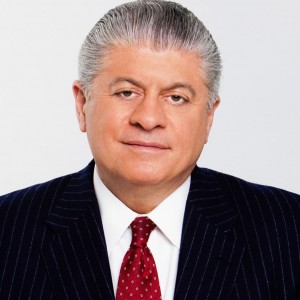Last week in a federal courtroom at the U.S. Naval Base in Guantanamo Bay, Cuba, an American physician hired by the Pentagon testified about the CIA’s use of rectal “feeding” tubes on prisoners it detained and tortured in Thailand from 2001 to 2006.
The physician, Sondra S. Crosby, M.D., an expert on tortures and other trauma, described the painful repeated insertion of plastic tubes into the anal cavity of the defendant in the case, Abd al-Rahim al-Nashiri, over a period of four years. Al-Nashiri is on trial for conspiracy to bomb the USS Cole in October 2000.
The hearing at which Dr. Crosby testified was ordered by the military judge when defense counsel told him the nature and extent of the torture visited upon their client by the CIA and its contractors. Dr. Crosby was given access to CIA raw notes and reports, some of which had not been seen by the investigators who produced the 2014 U.S. Senate 500-page documented study on CIA torture during the administration of President George W. Bush.
The site in Thailand at which al-Nashiri was tortured was run by Gina Haspel, the future CIA Director, nicknamed by her colleagues “Bloody Gina.” The CIA infamously made videos of the torture of al-Nashiri and others which Haspel destroyed.
Dr. Crosby, who was harshly critical of the CIA’s use of this internationally condemned interrogation technique, which is criminal under federal law, revealed that the CIA notes reflected that al-Nashiri, and others who received this barbaric treatment, were actually being fed nutrients via these anal tubes. She told the court that this must have been a subterfuge as there is simply no biological means to nourish a person via the person’s anal cavity.
The purpose of the hearing at which Dr. Crosby testified was to demonstrate to the judge that al-Nashiri made statements to his tormentors only so as to induce them to stop the torture and thus the statements are inherently unworthy of belief. All American courts that have addressed torture have ruled that statements made under torture are not admissible as evidence in a courtroom against the tortured victim. They are, however, admissible in prosecutions against the torturers.
The reason this is not cut-and-dry is that al-Nashiri repeated to FBI agents at Gitmo the same statements he made under torture in Thailand, out of a primordial fear, his lawyers argue, that the failure to do so would result in more torture. This permanent fear of torture is itself a form of torture not unlike the post-traumatic stress disorder often suffered by troops years after battle.
Dr. Crosby also testified that testimony given after torture is unreliable due to the manipulation of thought processes brought about by great pain and suffering.
The use of rectal feeding tubes was expressly authorized by Bush, even though forced entry into an anal cavity is the very definition of rape.
Do U.S. courts have jurisdiction over American government personnel who authorize or commit crimes outside the United States? The short answer is: yes. The longer answer abides numerous Supreme Court rulings, not the least of which addressed Gitmo itself, to the effect that generally, wherever the government goes, the Constitution goes with it, as well as federal statutes and the jurisdiction of federal courts.
I say “generally,” as the courts have distinguished fleeting presence from quasi-permanent presence. Fleeting presence, where jurisdiction is diminished, means government agents are continually moving and only stop temporarily. Quasi-permanence means the government sets up a facility — here a prison and a torture chamber — over which it has control, and thus the Constitution and federal laws apply. The latter is the case with the CIA’s so-called black site in Thailand.
The government has had its fill of torture-related legal issues at Gitmo. When Bush decided to employ and authorize a torture regime, he was advised to do so outside the U.S. because, his initial advice went, the Constitution didn’t apply, nor did federal law, and happily, he was told, federal judges couldn’t restrain him.
Yet, his administration lost five of six cases before the Supreme Court concerning the application of the Constitution and federal law at Gitmo. The sole Gitmo case the Bush team did win was about where to file a complaint against the president.
Today, the government so fears the full exposure of its torture regime that it is negotiating a plea deal with Khalid Sheikh Mohammed, the alleged 9/11 mastermind, whom it tortured for three years.
Bush also lost a human nature argument. Pushed by Vice President Dick Cheney, who praised rectal “feeding” as saving lives from starvation, Bush had no fear of the legal consequences of torture even if its horrors crept into military courtrooms. Bush believed that military men on military juries would not hesitate to convict those who confessed under torture and would not cringe at its revelation.
That, too, was a profound error in judgment and an insult based on a stereotype. Military juries have themselves asked judges to be merciful on convicted defendants because of the criminal acts the CIA committed upon them.
Like the dictators against whom he railed, Bush had a personal army and torture machine answerable only to himself — the CIA.
Has the government prosecuted anyone after 9/11 for engaging in acts of torture or for authorizing or aiding them? No.
While the five-year statute of limitations on prosecutions for violations of federal criminal statutes has obviously expired, there is no statute of limitations for war crimes, of which torture is one.
The Supreme Court itself has ruled that among the rights universally recognized by all nations is the right to be free from physical and psychological torture. Federal courts have even referred to torturers as akin to pirates and slave traders. In the classic judicial reference to torture, “the torturer is hostis humani generis, an enemy of all mankind.” So, too, are those who authorize him.
–-Judge Andrew Napolitano




